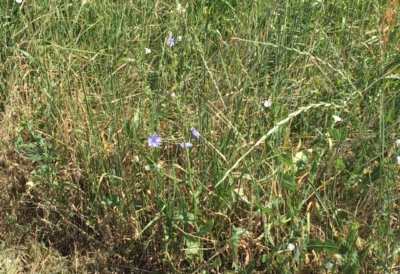Chicory Treatment and Management
So many of Colorado’s noxious weeds are a lovely addition to the landscape. Unless you’re the owner of that landscape, that is. As a List C Species on Colorado’s noxious weed list, chicory is required to be eradicated, suppressed or managed, depending on jurisdiction. Left unmanaged, noxious weeds can crowd out beneficial natural plants and even completely take over pasture and 
Chicory Noxious Weed Control
It’s possible to manage small amounts of chicory by pulling, digging up or mowing the plants. But because the plant reproduces by seed and the seeds can survive for up to four years, timing is important when it comes to mechanical removal. The plants are most easily removed from soft, damp soil in spring to early summer before seeds set. Chicory doesn’t handle disruption well and that means it can be eradicated if mechanical removal efforts are persistent.
Planting appropriate grasses (like tall ornamental grasses with a strong root system) and/or herbaceous flowering plants called forbs can actually take over land previously inhabited by chicory. Most weeds are highly competitive plants, but chicory is one of the less competitive weeds. Unfortunately, there are no known natural enemies of chicory.
If mechanical removal and/or adding plants to crowd out chicory don’t work or if chicory covers too much property, chemical treatment may be your best option of chicory noxious weed control. Chicory’s various life cycles require treatment with different chemicals and some of the chemicals have application restrictions. As the Colorado Department of Agriculture says, “Always read, understand and follow the label directions. The herbicide label is the LAW!” If you’re not able to apply chemical treatment exactly as required, it may be best to allow a professional to do it.
If chicory is growing on your property and you would like to get an assessment of the infestation and determine an effective control plan, contact SprayTech, Colorado commercial and residential weed-spraying specialists, at 720-248-0000.

